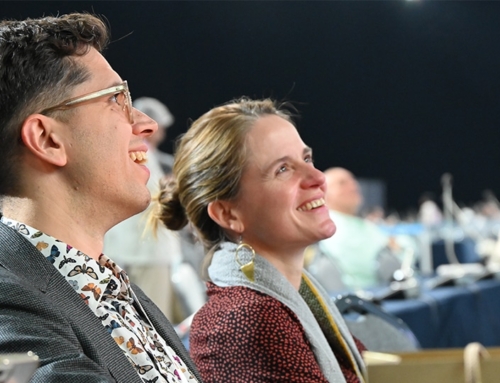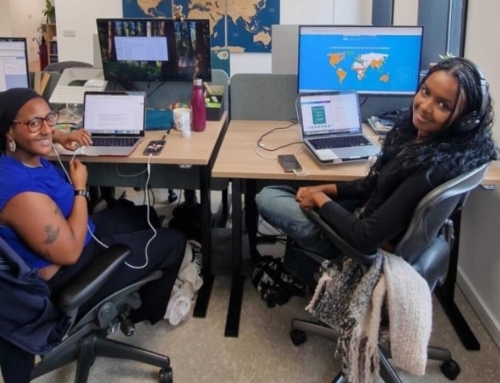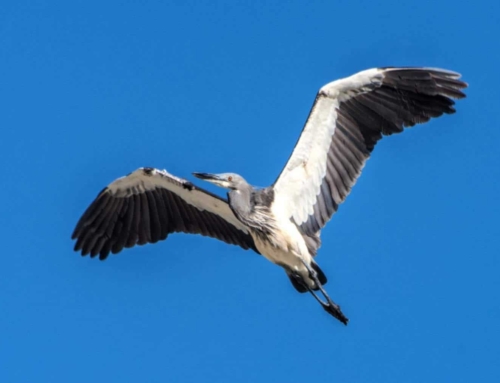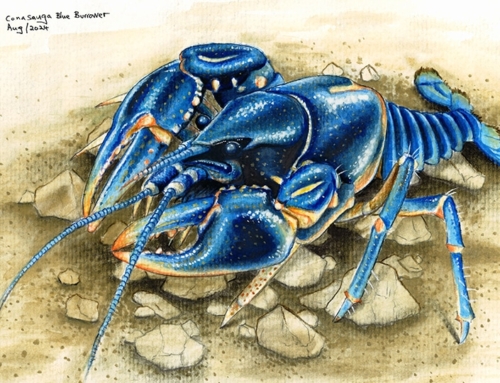Pria Ghosh joined the Synchronicity Earth research team in October 2020. With her expertise in amphibian conservation and particularly in amphibian disease, Pria was well placed to take the lead on our amphibian conservation programme. In this interview, she talks about how she came to work with amphibians, describes her new role at Synchronicity Earth and gives us her thoughts on diversity and inclusion in the conservation sector.
This interview is an edited extract of an interview by Prof. Trent Garner (ZSL) that appeared in the World Congress of Herpetology Newsletter (June 2021, Volume 2, Issue 1).
What are your earliest memories of nature, and how did your interest in herpetology (the study of amphibians and reptiles) come about?
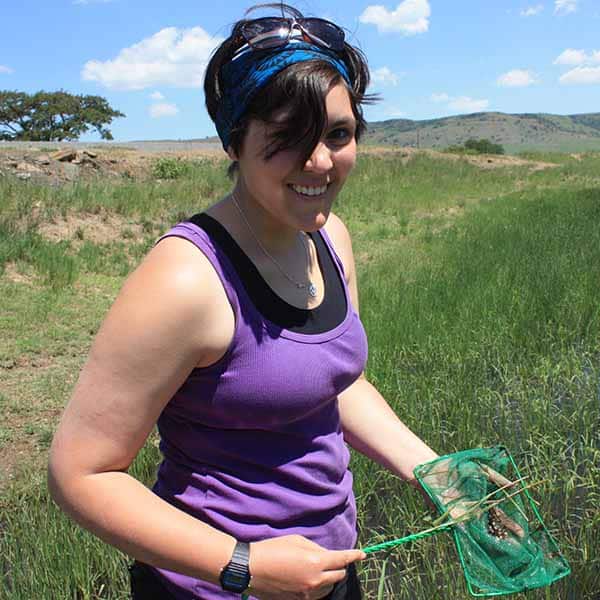
Pria in the field, South Africa. Photo by Che Weldon
My earliest memories of being with wildlife come from school holidays, mostly with my two grandads. My Mum’s Dad would take me fishing in the river near where he lived and then we’d barbecue the trout we’d caught, and I have strong memories of stomping after him as he flattened down the high grass to get to the river and sitting still enough to catch fish but also watch the river life carry on undisturbed.
My Dad is from India, and when we’d go to visit we’d often stay for quite a long time. My Dadu – my grandad – would take me, my brother and my cousins to a different game park every time we visited, always to a new part of the country, so he showed me India through its changing wildlife and environments. Watching the sun come up in the forest in the freezing cold with a thermos of chai was very special for a girl who spent most of her time in London.
My interest in wildlife conservation began way before my interest in amphibians and reptiles.
I’ve always had a soft spot for causes and things that are a bit under loved and overlooked and when I finished my biology degree, I was desperate to reconnect with why I had wanted to study the subject in the first place, and to get away from computers.
I wrote to Durrell and asked if I could train as a student zookeeper there. They said yes, and my first placement was in herpetology.
That was really my introduction to studying and working with reptiles and amphibians. I ended up asking to stay on the section for my full 6 months, rather than rotating through the other departments. While I was at Durrell, the number of amphibians being kept as ‘assurance populations’ (conservation breeding programmes designed to prevent a species from becoming extinct) from chytridiomycosis hit me hard.
Seeing tank after tank of amphibians being kept in captivity due to the same single threat hammered home the scale of the issue more effectively than any paper could have done. The two areas of biology I had focused on at university, and which have always interested me most both academically and as a cause, are wildlife conservation and public health. I guess it was sort of inevitable I would end up working on a wildlife disease.
Your post-graduate research career was based strongly in fundamental science, yet now you work for Synchronicity Earth, a conservation charity. Why this switch?
I love fundamental science and will always be a passionate supporter of it – but the two things that motivate me most are wildlife conservation and human health and equity. I loved doing academic research, but I could feel my motivation lagging and my research moving further away from translation into on the ground conservation.
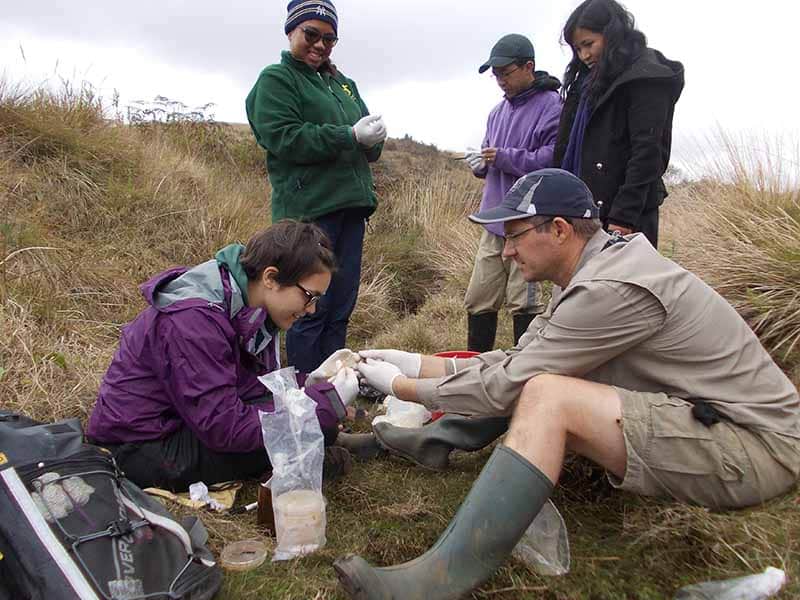
Amphibian research in Madagascar. Photo by Goncalo Rosa
I suppose I just wanted to take that fundamental science and what I’d learned but focus back on those two main drivers that motivate me.
Synchronicity Earth focuses on ‘overlooked and underfunded’ conservation causes, and also puts a respect for human rights and community participation in conservation central to its approach, so it felt like a really lucky aligning of the stars that they were hiring while I was looking for a job. Luckily, Synchronicity Earth was willing to take on a research scientist.
What are the key goals of Synchronicity Earth’s Amphibian Programme, which you are leading on?
The goals of our amphibian programme are to improve the knowledge base that guides amphibian conservation, to increase funding to amphibian conservation on the ground, and to support the development of amphibian conservation organisations.
The lack of funding and support to amphibian conservation organisations is the key gap we’re trying to bridge. I’m working very closely with the Amphibian Survival Alliance (ASA); at Synchronicity Earth, we have our own network of partners and collaborators, and are also a part of the ASA’s wider network of groups and people working towards halting and reversing amphibian population declines and preventing extinctions.
I don’t think that the intangible, emotional value of these networks can be overstated: aside from the benefits of learning from others’ experiences, this is a hard job to do, and it’s important that people doing it know that they’re not alone but part of a global community. These networks are something I really want to continue to nurture and strengthen.
We’ve also recently launched the Amphibian Conservation Fund kickstarted with part of our Chief Scientific Adviser Simon Stuart’s Blue Planet Prize; we were joined in this venture by Oak Foundation, Fondation Segré, and now BAND Foundation. Together, I think we are gathering real momentum to push amphibian conservation forward and expand the scope and ambition of the Amphibian Programme at Synchronicity Earth.

Synchronicity Earth recently began supporting Save Ghana Frogs, an organisation working to protect the squeaker frog, among other species. Photo: Save Ghana Frogs
In late 2020 and early 2021, we expanded and began supporting Instituto Biotrópicos in Brazil and Asociación Pro Fauna Silvestre – Ayacucho in Peru. Instituto Biotropicós will be working to conserve tiny bromeliad-dwelling frogs in the Espinhaço Mountains; Asociación Pro Fauna Silvestre – Ayacucho are an amazing group, who have been working on an entirely voluntary basis for years to safeguard species in a highly biodiverse, highly threatened and highly challenging region of Peru, where very few conservation organisations are operating. We’ve also recently begun supporting Save Ghana Frogs, without whose efforts the giant squeaker frog of Ghana would most likely be facing extinction and the Endangered Wildlife Trust of South Africa, who do an exemplary job of translating conservation research into conservation action. This is just the beginning!
UK universities, research organisations and charities are undertaking to decolonise research and conservation. How is Synchronicity Earth responding to this initiative?
I’m not an expert on this, so I feel cautious because I have a lot to learn. But here’s where I’m looking at this movement and Synchronicity Earth from: I sit at an interesting intersection that means this issue is sort of inevitably always going to loom large over everything I do. I’m a mixed race woman (who looks obviously Caucasian or obviously Asian, or even obviously Latin American or, once, Swedish, depending on who you ask!) and that makes me part of a very small group of UK conservation employees from an ethnic minority background. One study estimates that we make up just 0.6% of the environmental practitioner workforce, the second worst sector for diversity in the UK.
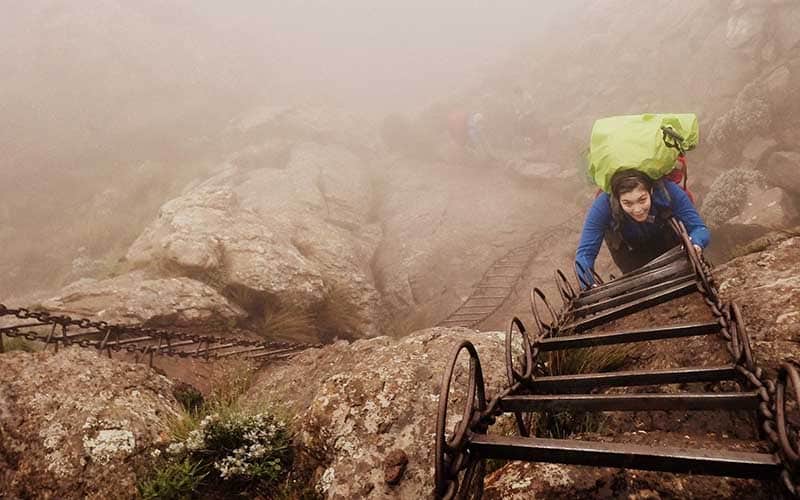
Pria on Mont-aux-Sources, South Africa. Photo by Abigail Wolmorans
I also know from my life’s experiences that being both a woman and an ethnic minority have, occasionally, affected how I’ve been treated or spoken to. I’m also privileged, though, grew up and was educated in one of the wealthiest nations in the world, speak English as a first language, have not struggled financially and have a PhD from one of the UK’s best-known institutions, with all the associated advantages that brings me.
I can’t help but think about how we operate as a sector, and analyse colonial hangovers of how we operate, because this reality has screamed at me in my everyday life. I can only imagine how exhausting it must be if you take each of my privileges off the list and experience those screams on a more regular basis.
I’m glad it’s being addressed, and when I feel uncomfortable or unsure, or nervous of what the answers will be, then that’s probably a sign that the questions are worth asking, and I’m confident that research and conservation will be better for it.
For me, the key to this issue is: is this lip service or is the organisation thinking about how they operate and making changes? One thing I’ve really appreciated at Synchronicity Earth since starting is that the organisation starts from an assumption that we don’t necessarily know the best approach and we need to listen to the experts, in every aspect – and those experts are normally the people on the ground in the organisations being funded.
Formal conservation has traditionally been something imposed, top down, and there has been a tendency to remove humans from the equation, to take humans out of nature. But this doesn’t respect or value the really special relationships that we all have, from the individual level to entire communities, with the wider world. It also risks not respecting the local knowledge, and experience which is not only ethically wrong, but in my opinion really stupid.
The conservation and philanthropic worlds are built around systems and models developed primarily in a small number of wealthy countries. It’s often said in conservation that there isn’t a silver bullet, and I think that this is true of wider systems as well as specific conservation actions. And the first step to dealing with that is to listen to people on the ground, and truly collaborate, and try to build the strongest, locally appropriate systems together, and to truly respect the knowledge, expertise and value that real diversity in backgrounds and experiences brings.
There are obviously restrictions, as a UK funding organisation and charity we need to make sure we meet all the necessary UK regulations, and the requests of our donors, to ensure that funding can be continued wherever possible. Within those parameters however, Synchronicity Earth tries to be as flexible and as open as possible, to enable uncomfortable but necessary conversations to happen both internally and externally. We also try to avoid a traditional funder/grantee relationship, despite the power imbalance that is hard to ignore. It’s probably impossible for grantees to ignore, so as an organisation we try to actively remember it’s there and consider how to mitigate its negative effects.
The most important aspect of how Synchronicity Earth addresses the issue is in our funding model: we try to support grassroots and locally or Indigenous led organisations as much as possible, and to keep funding flexible so that partners can tell us what they see as the key funding needs rather than imposing what we, sitting far away, think should be done.
We are also having more conversations internally about how to decrease the drivers of biodiversity loss from countries like the UK – there’s often a huge pressure on communities local to where biodiversity loss is happening to change their ways of life and activities, but the reality is that most of that consumer pressure that is driving habitat destruction and species extinctions, as well as human rights violations, comes from countries like mine. I’m glad that these conversations are happening, but I personally would like to see UK, European and US-based conservation organisations push this much further, particularly if they have access to financial or political power.

